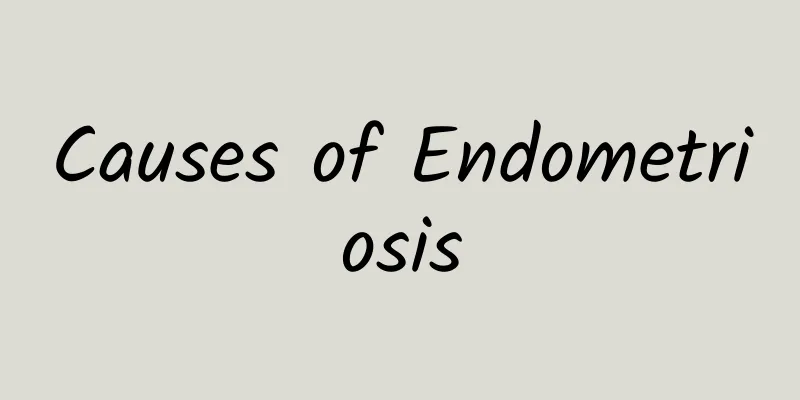Causes of Endometriosis

|
The causes of endometriosis may involve genetic factors, environmental influences, abnormal physiological mechanisms, and pathological changes. Understanding these possible causes of the disease will help with early prevention and targeted treatment. 1. Genetic factors Studies have shown that endometriosis has a certain family genetic tendency. If a direct relative such as a mother or sister has a history of endometriosis, a woman may have a higher risk of developing the disease. This may be related to certain gene variants, such as genes that affect the immune system or inflammatory response. Regular physical examinations and enhanced screening in high-risk groups are especially important for women with a family history. 2 External influence of environmental factors Certain chemicals in the environment may increase the risk of endometriosis, such as dioxins and endocrine disruptors. These substances may cause endometrial cell malformation by changing the body's hormonal balance or enhancing inflammatory responses. Occupational exposure, such as long-term work in high temperature or chemical production environments, is also a possible cause. Minimizing exposure to these potentially harmful substances and choosing a healthy lifestyle can effectively reduce the risk. 3 Physiological factors and their own mechanisms Retrograde menstruation is considered an important physiological factor of endometriosis. That is, during menstruation, endometrial tissue flows back to the pelvic cavity through the fallopian tubes instead of being discharged from the body with menstrual blood. These cells implant and proliferate in the pelvic cavity. Immune system dysfunction may cause the body to be unable to effectively remove these ectopic tissues, causing the disease to gradually develop. By maintaining a regular schedule and strengthening immunity, the risk of disease progression can be reduced to a certain extent. 4 Trauma or surgery induced Minimally invasive surgical issues in the reproductive tract may also be a trigger for the development of endometriosis. For example, cesarean sections or uterine fibroid surgery may transfer endometrial cells to abnormal locations, forming ectopic tissue. Choosing an experienced professional to perform the surgery and paying attention to postoperative follow-up can help reduce this risk. 5. Pathological changes and potential impact of diseases Abnormal hormone secretion, such as high estrogen levels, can promote the occurrence of endometriosis. Chronic pelvic infection, inflammation and other pathological changes may also become important factors in triggering endometrial cell ectopic. Scientific management of endocrine health and timely control of inflammation and related infections can effectively prevent the disease from worsening. Knowing the causes of endometriosis in a timely manner will help you take targeted preventive and treatment measures. If you experience symptoms such as abnormal menstruation, dysmenorrhea, or infertility, you should consult a gynecologist as soon as possible to develop a scientific diagnosis and treatment plan. This is the key to recovering your health as soon as possible. |
<<: Why does hydatidiform mole form?
>>: What medicine can cure endometritis and pelvic inflammatory disease quickly?
Recommend
Will ectopic pregnancy cause persistent stomach pain?
Will ectopic pregnancy cause persistent stomach p...
Moxibustion for the treatment of hyperprolactinemia
Moxibustion is currently a key method for treatin...
How to judge whether uterine fibroids are malignant? What should I do if I have uterine fibroids?
Uterine fibroids are one of the most common benig...
Which hospital is good for abortion in Shenyang?
Abortion is terrible. After all, it is the end of...
What should be paid attention to when treating cervical erosion? Interpretation of common sense of treatment for female cervical erosion
We talk about many cases of cervical "erosio...
What are the symptoms of functional uterine bleeding and how to treat it
Functional uterine bleeding is often manifested a...
Paying attention to details in life can reduce the chance of vaginitis
Nowadays, many women suffer from vaginitis, which...
How to correctly diagnose cervical hypertrophy?
Only by making a good diagnosis of cervical hyper...
How long after an abortion can I go out? See what the doctor says
Pregnancy is a lucky and beautiful thing, but it ...
What causes uterine cysts and how to treat them?
The formation of uterine cysts may be related to ...
How can women detect pelvic peritonitis early?
When the female body's resistance is reduced,...
Is it difficult for office workers to lose weight? 17 Habits to Help You Lose Weight (Part 1)
Healthy weight loss has always been the hottest t...
What are the key points to prevent allergic vaginitis?
The emergence of allergic vaginitis has brought a...
Is female cervicitis a serious disease? How should female cervicitis be treated?
What are the causes and care methods of cervical ...
Analyze for you what are the symptoms of cervical erosion
Many people want to know what are the symptoms of...









